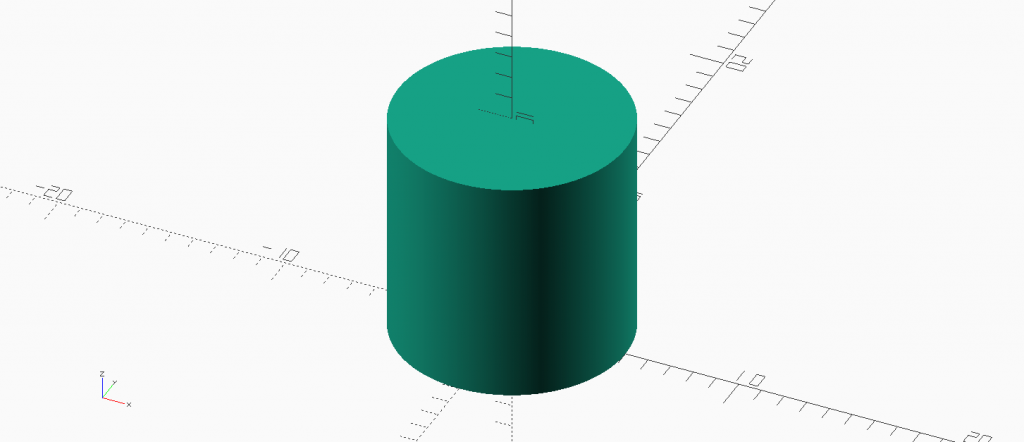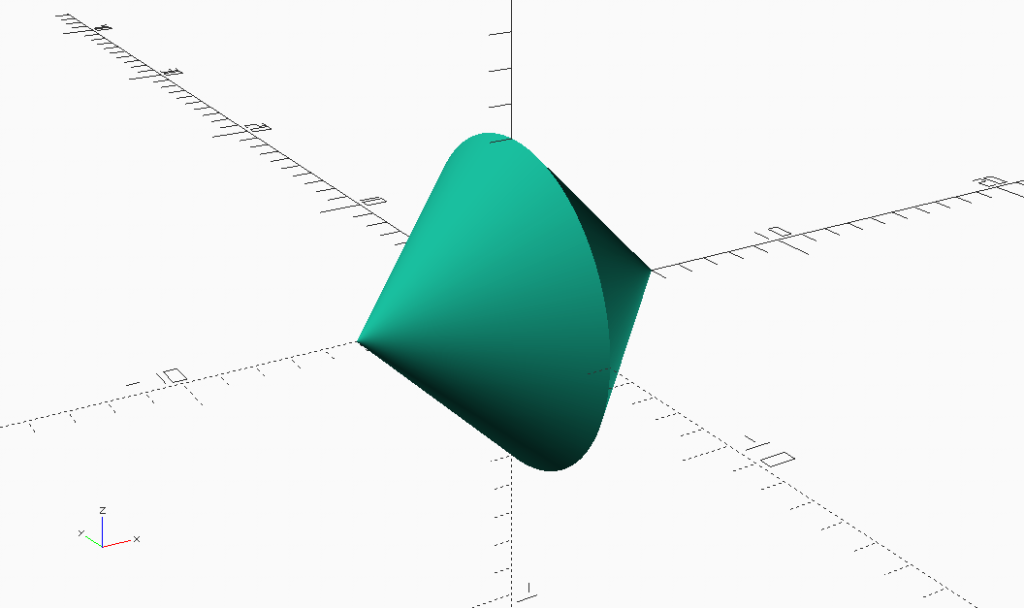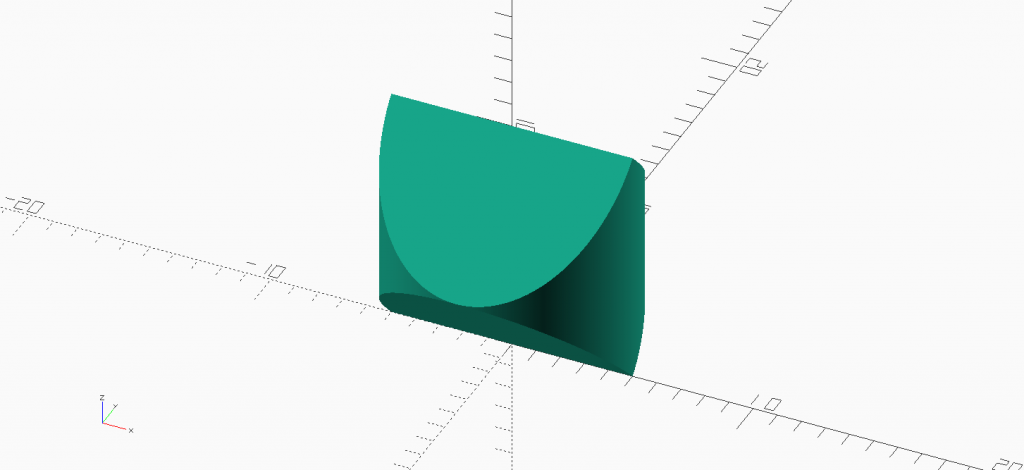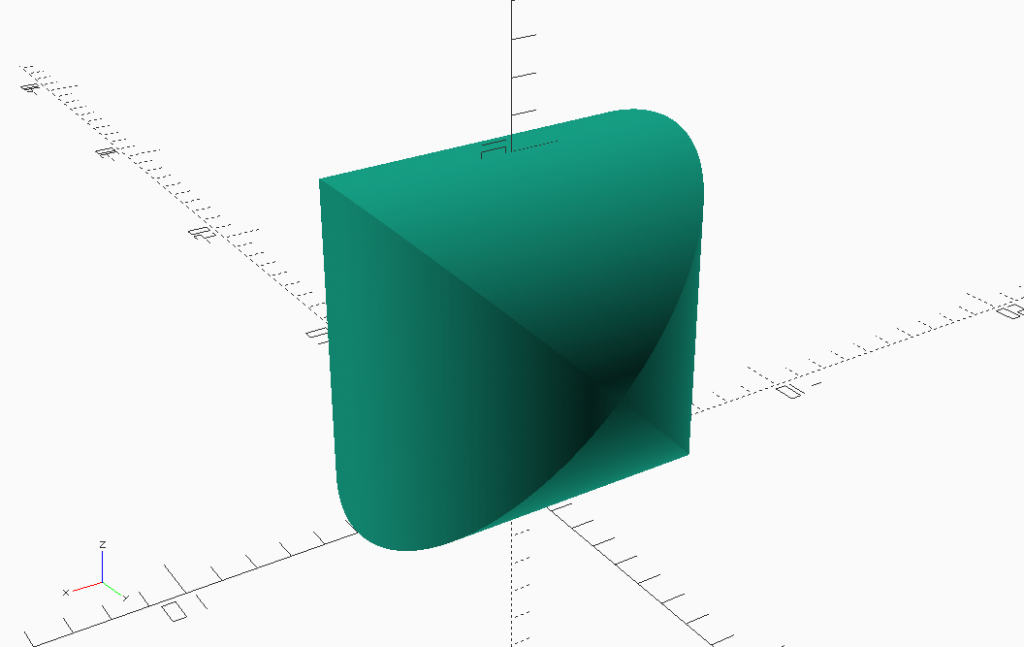Round Square Combinations are Surprising
All four of these solids are Round Squares. I thought I had a general rule for calculating the combinations when I found the first two but then I found another and another. Is there a general formula for all the possible combinations. What are the parameters? Numerically there could be 6 but I do not think geometrically 6 are possible. This gets more confusing for Round Triangles or Square Triangles.
Cylinder is the obvious round square.

Cones are round triangle. Two triangles for a square. Two cones form a round square.

Combinations of 3D shapes are either unions or intersections. The intersection of a cylinder and a wedge makes a Round Square Triangle. The union of two half height Round Square Triangles form a Round Square.

Intersection of two cylinders rotates 90 degrees from each other leaves a square and two rounded sides for the Fourth Round Square.

I found the first two using pencil and paper. The third with FreeCAD thinking in a subtractive then additive fashion. The fourth I found using OpenSCAD. The different approaches enabled finding the alternatives. I would not have found the fourth type using pencil and paper, the CAD software showed me what I described.
How would you go about finding a proof for a general formula?
Easily Solving Your Biggest Future Challenges Keynote @ BTOES
https://www.youtube.com/watch?v=-LBwaR7w5GY
The world is changing faster and faster. Automation, globalization, and the Internet changed the rules that worked in the past. The future challenges will not be like the past.
Today, rules change almost as quickly as you can learn them. Process will not help you in this increasingly more rapid paced, higher stakes environment. To succeed, you need a new way of thinking.
You need to think predictively.
In this keynote I explain the discovery of a new way of thinking that anyone can use to:
- Solve seemingly unsolvable problems on demand
- Map future innovations for products & services, processes, & business strategy
- See 5X, 10x, even 20X improvements hiding in plain view
The crucial piece needed for success that is missing from Agile, Lean, 6 Sigma and all process focused systems.
Creativity and Innovation Can Be Learned
I make a distinction between creativity and innovation. I define innovation as “Profitably satisfying unmet desires.” Profitable doesn’t just mean money, it means better satisfying the desires of everyone involved. A new device or way of doing something won’t be accepted unless it makes things better for everyone who is needed to make it happen.
Creativity is newness without the need to satisfy a desire other than the maker. There is lots of creative stuff that is just horrible and no one likes it. This is why there is an expression “Starving artist”. There is a distinction between creating for no real purpose and creating to improve something. Another part of innovation is until you put the idea into use innovation has not occurred. You must actually do something to achieve innovation, not just have an idea.
The similarity between Creativity and Innovation is information. Both innovation and creativity start with an idea, information. The foundation of information is comparison. Two things are similar or different. Computers store and process information using a very simple comparison, same or different. All information can be encoded using that binary process.
The human mind doesn’t do this in a linear process, it makes hundreds or perhaps millions of comparisons at the same time. So what seems to be an idea “coming into your mind” is noticing a similarity or difference. You recognize some connection then put those things together and that is what we call creativity.
As is often the case, when you ask someone who is very talented how they do something, they can’t describe it. Often it takes someone else watching and recording each little step then asking “Why did you do that?” to figure out the process the talented person instinctively follows.
As an example how do you walk? You learned how to walk before you learned how to talk so you probably never thought about how to describe the process. How do you control the dozens of muscles to respond to your body shifting and falling forward then catching yourself and pushing off again? That natural “instinctive” behavior is something you learned how to do. And interestingly you can intentionally learn how to do it better.
The exact same thing applies to thinking and “creativity”. Everyone has some basic skill they acquired at an early age. You can develop and improve that skill through focused learning.
Predictive Innovation® teaches you the skills to be think so you are more creative and innovative.



 Predictive Innovation Training
Predictive Innovation Training Predictive Innovation: Core Skills Book
Predictive Innovation: Core Skills Book RoundSquareTriangle.com
RoundSquareTriangle.com